
Victoria Likhanova Postimpressionism
1886 is considered to be the start of postimpressionism. It was the year when “The Manifesto of Symbolism” was published and the last impressionists’ exhibit was held in France.
The main representatives of postimpressionism were Paul Sesanne, Vincent van Gogh and Paul Goghen.
Postimpressionists aimed to reproduce not the momentary phenomena but the substantial ones. They didn’t want to portray the surface of the things. Goghen compared the art with a mirror and said that his works reflected not the appearance of the figures but the painter’s spirits. Thus, the purpose of the art was self-expression.
Sesanne made the objects and bodies he painted weighable, volumetric, physical. The works of his predecessors, impressionists, are deprived of these characteristics.
Vincent van Gogh aimed to express his own attitude to the things he painted by means of colours. He thought there were the colours which “liked” each other and those ones which “hated” each other. That’s why their contrast or harmony can express different moods of the painter. Van Gogh’s dabs could also express emotions. Sometimes they are sharp and abrupt, sometimes – round and gentle.
Goghen liked the primitive society and eastern art. He said he painted his dreams. His art is the world of miracle, of fairy tale. Colour in Goghen’s paintings is just decorative.
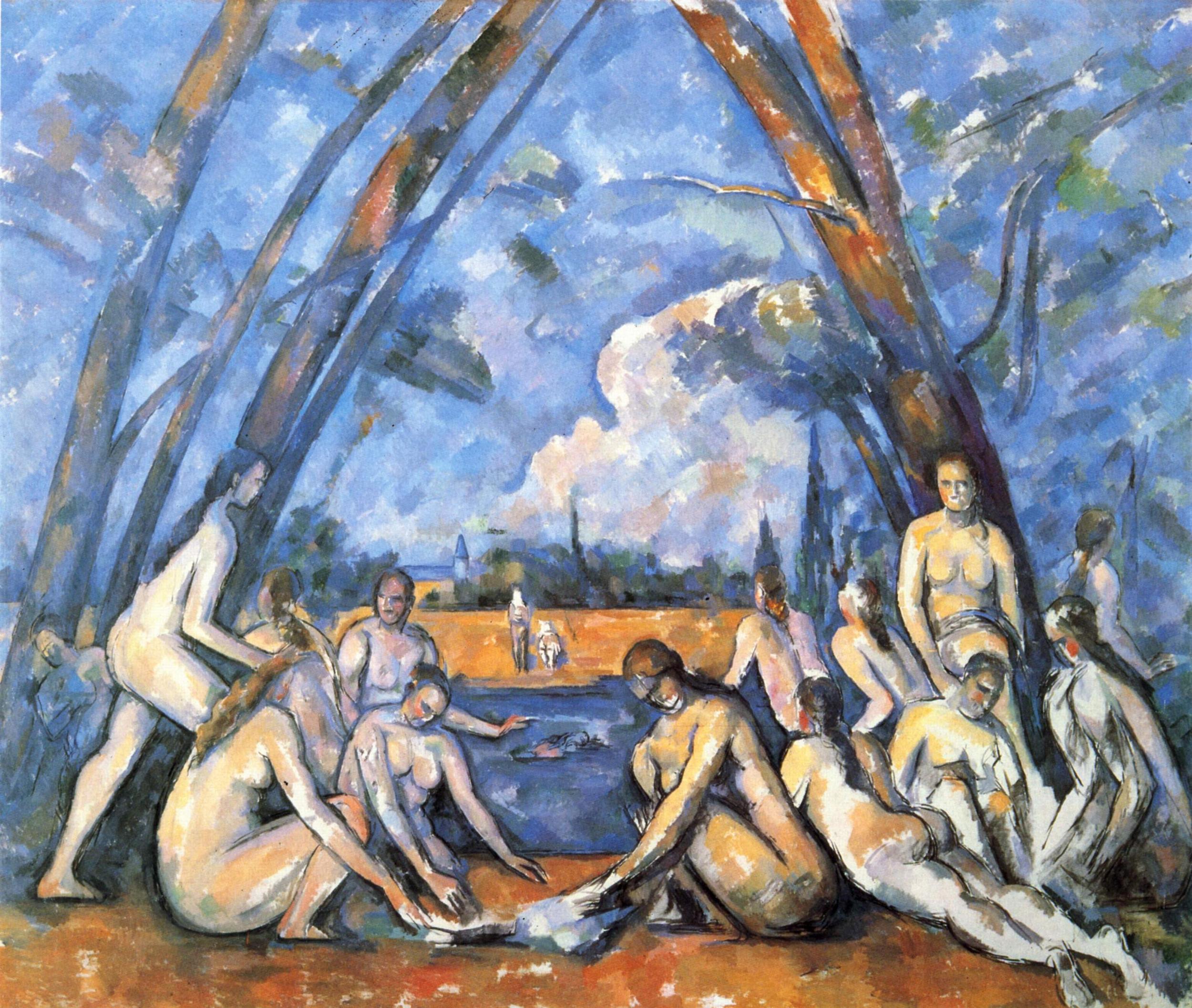
Paul Sesanne Bathers
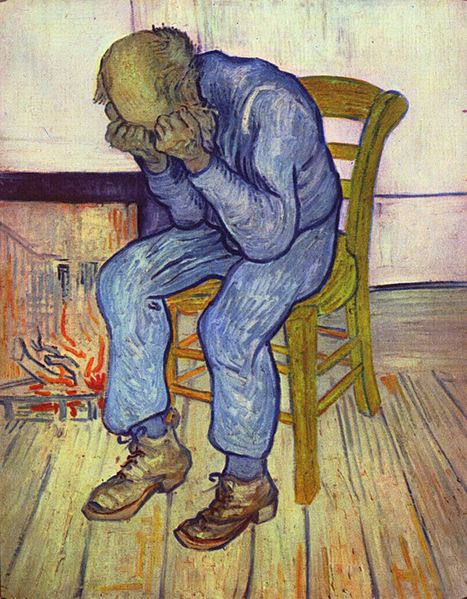
Vincent Van Gogh a Crying Old Man Vincent van Gogh a Cafe Terrace at Night
Paul
Goghen The King's Wife
Paul
Sesanne Peasants' House


Paul Goghen A Woman With a Fruit
Uliyana Ivanova
Pop-art
POP ART-popular,public art.Sometimes the term is explain through the meaning of English onomatopoeic word 'pop"- abrupt blow,slap,i.e.the art having shocking effect / It is the avant-garde art direction in America and west Europe which arose in the 50th years of the XX century.
The pop art arose as reaction to abstract,pointless art.The pop art refuses usual methods of painting and a sculpture.It cultivates the image of ready household subjects(buckets,old cases,pans,linen,the old rumpled cars etc.);mechanical copies(model,reproduction,photo);printing editions(advertizing,industrial graphics,comics and so forth).Thus set of subjects carries accidental and unessential character/For example,artists exposed the pure canvas which has been tied up on diagonals by a colour scarf or a handkerchief.Connection of subjects not conneccted at first sight,couteraction to imagination and associative thinking of the viewer was the main thing.
Uniqueness,individuality of the creator isn't characteristic for pop art works.The effect of surprise,novelty of the decision is important only.
The pop art originated almost at the same time in England and the USA.It has a great number of species:"new realism"(French version),Sots Art(Russian version),happening art of object and etc.Versions of pop art appeared not only in painting,a sculpture,but also in theater life:in development of "nonverbal theater",using a sigh language of subjects.
Among bright representatives of pop art - R.Raushenberg,K.Aldenberg,R.Likhtenstayn,Rozenkvist(USA);L.Ellouey,River Hamilton(England);Armand(France);P.Vunderlikh(Germany);I.kAbanov,V.yankelevsky(Russia).
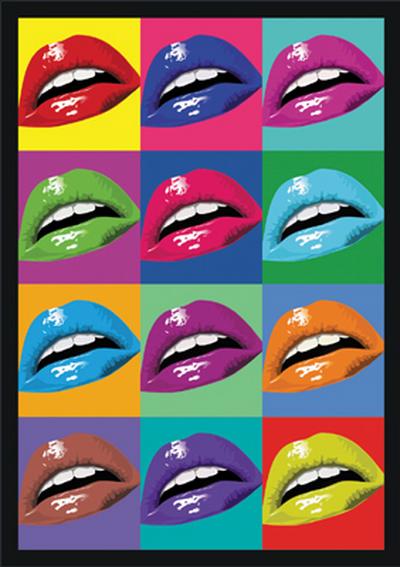
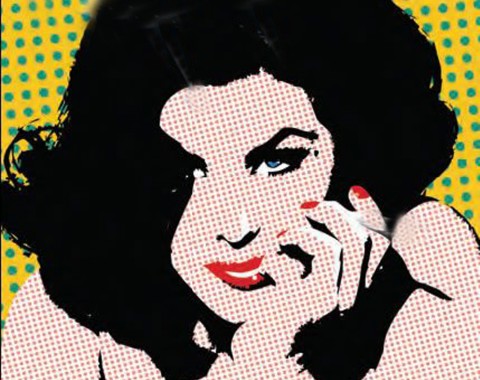
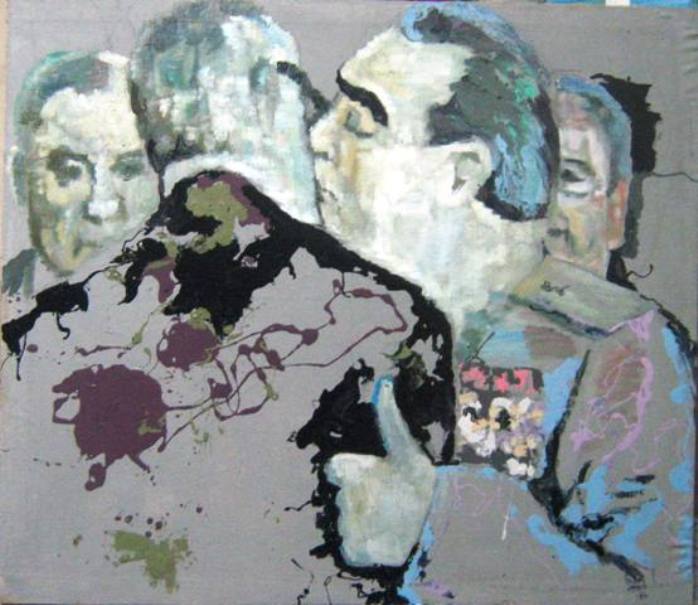
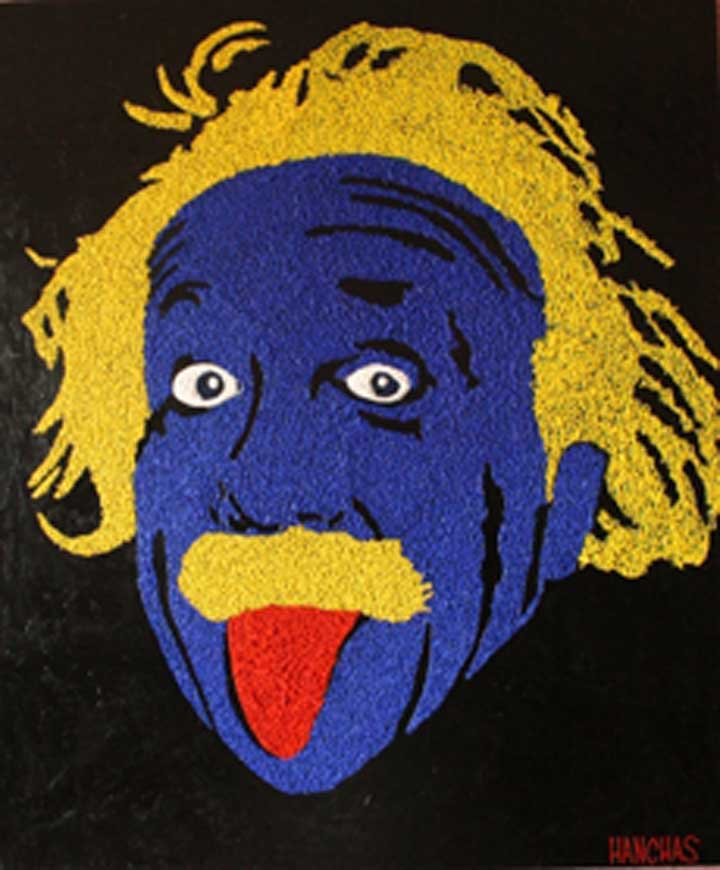
Alexandra Goncharova
Expressionism – (from Fr. Expression) – the modernist trend in Western European art, mainly in Germany, one third of the 20th century, prevailing in a specific historical period – on the eve of the first World War. It became the ideological basis of individualistic protest against the ugly world, a growing estrangement of man from the world, a sense of homelessness, the crash, the disintegration of those principles, to support European culture. It paid peculiar attraction to mysticism and pessimism. Artistic methods characterizing expressionism: the rejection of illusory space, the desire for treatment of planar objects, the deformation of objects, a love of sharp color dissonance, a special color, including an apocalyptic drama. Artists perceived creativity as a way of expressing emotion.
The forerunners of expressionism are Vansant Van Gogh, James Ensor.
They distinguish two periods in expressionism: before the First World War and after.
The first period include the work of German artist Paul Klee, Alfred Cubin and Oscar Kokoschka.
The second period, here is expressionism during the First World War and postwar years.
By the beginning of a new period the associations “Bridge” and “Blue Rider” broke up.
Expressionist’s trends of the period in the work of Max Beckmann, Karl Hofen and Otto Dix.
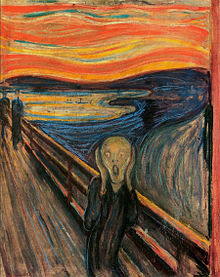
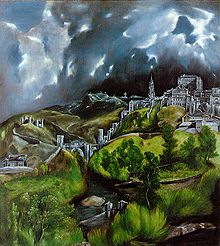 "View of Toledo"
by El
Greco
"View of Toledo"
by El
Greco
The Scream by Edvard Munch (1893)

 Wassily
Kandinsky, On
White II, 1923
Wassily
Kandinsky, On
White II, 1923
Rehe im Walde, 1914, by Franz Marc
Christine Aksyonova
Abstract expressionisman artistic movement,developed by American painters in 1940s and 1950s,comprising diverse styles and techniques and emphasizing especially an artist's liberty to convey attitudes and emotions through nontraditional and usually nonrepresentational means.
"A term first used in connection with Kandinsky in 1919, but more commonly associated with post-war American art. Robert Coates, an American critic, coined it in 1946, referring to Gorky, Pollock and de Kooning. The Abstract Expressionists were mostly based in New York City, and also became known as the New York School.They were inspired by the Surrealist idea that art should come from the unconscious mind, and by the techniques of automatic art.The movement was hugely successful, partly due to the efforts of the critics.
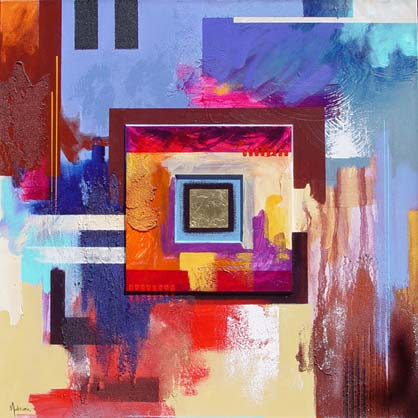
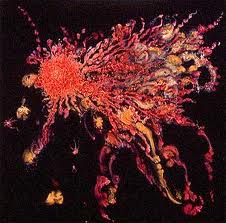
Artists typically applied paint rapidly, and with force to their huge canvases in an effort to show feelings and emotions, painting gesturally, non-geometrically, sometimes applying paint with large brushes, sometimes dripping or even throwing it onto canvas. Their work is characterized by a strong dependence on what appears to be accident and chance, but which is actually highly planned. Painters mostly used the liquid paints and various tools such as sticks, leaves, feathers, pallets.
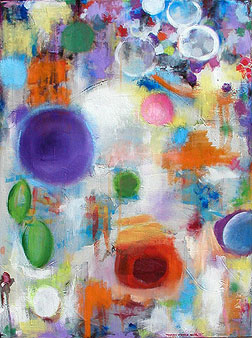
There are two distinct groups within the movement: the so-called action painters led by Pollock and De Kooning, and the colour-field painters, notably Rothko, Newman and Still.
The action painters worked in a spontaneous ‘improvisatory manner often using large brushes to make sweeping gestural marks. Pollock famously placed his canvas on the ground and danced around it pouring paint direct from the can or trailing it from the brush or a stick. In this way they directly placed their inner impulses on the canvas.


![]()
Franz Kline, Painting Number 2, 1954, The Museum of Modern Art
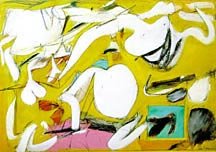
Fire Island, 1946
